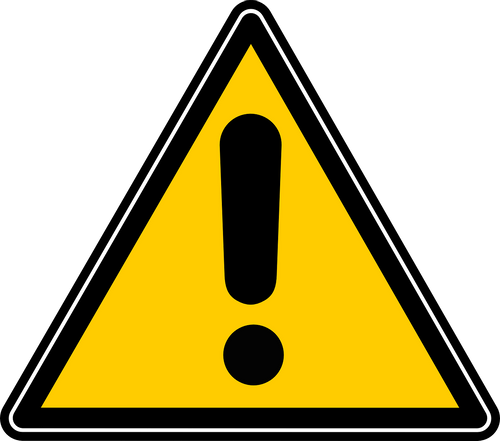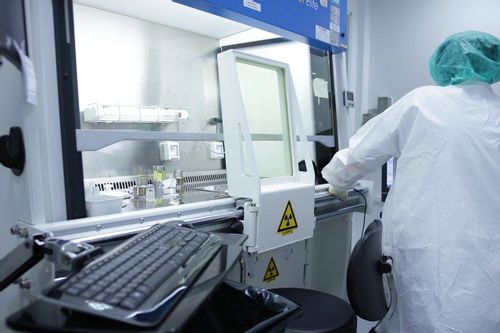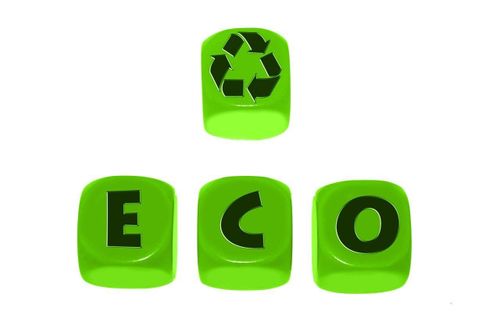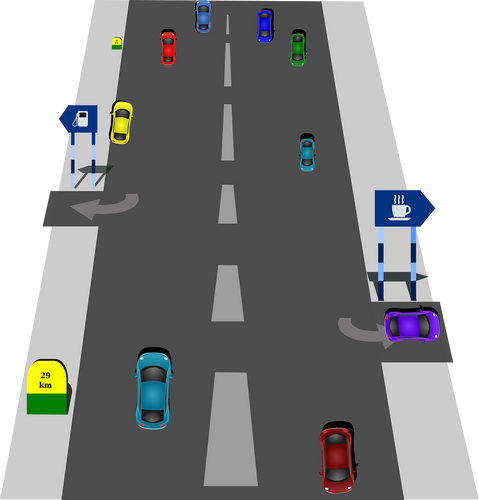Standards Packages
iTeh together with SIST has developed and compiled a comprehensive collection of standard packages to support your standard requirements. Our packages cover an array of content that includes quality management, risk management, road vehicles, machine safety, and much more. With over 200 packages to choose from, you are sure to find a collection to suit your standard needs.
Latest Standards
This document specifies methods and metrics for assessing the accuracy and precision of 3D scanned data for use in 3D printing, throughout the full 3D printing lifecycle. This document focuses mainly on 3D scanned data from computed tomography. Computed tomography can acquire information concerning the internal structures, regional density, orientation and/or alignment of scanning objects, as well as their shape and appearance. This document is applicable to the assessment of image-based modelling, segmentation, and 3D models. This document is not intended to assess the 3D printed product itself.
- Standard24 pagesEnglish languagesale 15% off
- Draft24 pagesEnglish languagesale 15% off
- Draft24 pagesEnglish languagesale 15% off
This document sets out principles and procedures for testing the bias of test samples of coals or cokes, taken according to the ISO 13909 series.
- Standard26 pagesEnglish languagesale 15% off
- Draft26 pagesEnglish languagesale 15% off
- Draft26 pagesEnglish languagesale 15% off
This document specifies the characteristics of prevailing torque (all metal) hexagon regular nuts, in steel and stainless steel, with metric coarse pitch thread M5 to M39, and with product grades A and B.
NOTE These nuts are designed with an overall height hmin = mmin (as specified in ISO 898-2 and ISO 4032 for style 1) plus the prevailing torque feature. hmax has been established in function of hmin; therefore, the tolerance (hmax – hmin) does not follow the ISO code system for tolerances (IT system).
If in certain cases other specifications are requested, property classes and stainless steel grades can be selected from ISO 898-2 or ISO 3506-2.
- Standard13 pagesEnglish languagesale 10% offe-Library read for1 day
General
1.1 RO.1 General
(ncpt) This standard EN 50341-2-24 (Part 2-24) gives the requirements for design and construction of overhead electrical lines with nominal voltages exceeding A.C. 1 kV operating at 50 Hz frequency.
This Part 2-24 applies to new overhead electrical lines, as well as in the following cases:
- the extension of existing overhead electrical lines;
- the deviation of some portions of the existing overhead electrical lines in accordance with the provisions of technical regulations in force issued by the National Energy Regulatory Authority (see article 39 of ANRE Order 25/2016);
- new supports to be used for the replacement and/or relocation of existing supports.
This Part 2-24 is not applicable for the existing overhead electrical lines unless specifically required by Project Specification. The overhead electrical lines, that are in different stages of design or construction, can be completed in conformity with the standards in force at the beginning of project.
For the application of this standard for specific requirements relating to modernization, increasing safety and transport capacity of existing overhead electrical lines, reference shall be specified in the Project Specification. At the same time, the correlation between relevant regulations and associated standards shall be established in the Project Specifications.
The extension of existing electrical lines is considered as new overhead electrical lines, except the junction points that shall be detailed in the Project Specifications.
1.2 Field of application
1.2 RO.1 Overhead electrical lines having uninsulated, pre-insulated and insulated conductors
(ncpt) This Part 2-24 is applicable for the design and construction of overhead electrical lines with uninsulated, pre-insulated and insulated conductors where the internal and external clearances can be smaller than those specified in Part 1 (SR EN 50341-1:2013).
- Standard94 pagesEnglish languagesale 10% offe-Library read for1 day
This document specifies methods for the determination of components in plastics that can be extracted by hot organic liquids near their boiling points. It also specifies a special extraction method called cold-extraction.
The extractable components can be monomers, oligomers, polymers, plasticizers, stabilizers, etc. The kind and percentage of extractable matter influence the properties of plastics.
This document does not apply to plastics that come into contact with food or drinking water, because special regulations for those plastics are established in many countries. The methods of this document are not intended to be used for migration tests.
If this document is used to test plastics other than those mentioned in Table 1, the operating conditions are intended to be agreed upon by the interested parties.
- Standard22 pagesEnglish languagesale 10% offe-Library read for1 day
This document specifies requirements for the protective provisions relating to electrical safety in fixed installations, when it is reasonably likely that hazardous voltages or currents will arise for people or equipment, as a result of the mutual interaction of AC and DC electric power supply traction systems.
It also applies to all aspects of fixed installations that are necessary to ensure electrical safety during maintenance work within electric power supply traction systems.
The mutual interaction can be of any of the following kinds:
- parallel running of AC and DC electric traction power supply systems;
- crossing of AC and DC electric traction power supply systems;
- shared use of tracks, buildings or other structures;
- system separation sections between AC and DC electric traction power supply systems.
The scope is limited to galvanic, inductive and capacitive coupling of the fundamental frequency voltages and currents and their superposition.
This document applies to all new lines, extensions and to all major revisions to existing lines for the following electric traction power supply systems:
a) railways;
b) guided mass transport systems such as:
1) tramways,
2) elevated and underground railways,
3) mountain railways,
4) magnetically levitated systems, which use a contact line system,
5) trolleybus systems, and
6) electric traction power supply systems for road vehicles, which use an overhead contact line system;
c) material transportation systems. The document does not apply to:
a) electric traction power supply systems in underground mines;
b) cranes, transportable platforms and similar transportation equipment on rails, temporary structures (e.g. exhibition structures) in so far as these are not supplied directly or via transformers from the contact line system and are not endangered by the electric traction power supply system for railways;
c) suspended cable cars;
d) funicular railways;
e) procedures or rules for maintenance.
The rules given in this document can also be applied to mutual interaction with non-electrified tracks, if hazardous voltages or currents can arise from AC or DC electric traction power supply systems.
- Amendment4 pagesEnglish languagesale 10% offe-Library read for1 day
- Amendment4 pagesEnglish languagesale 10% offe-Library read for1 day
This document:
a) builds on the models established in ISO 19152-1 and ISO 19152-2 to cover the valuation aspect of the Land Administration Domain Model (LADM);
b) provides an abstract conceptual model covering:
1) values (assessed values, valuation procedures, mass valuation);
2) transaction prices;
3) sales statistics;
4) valuation units (parcel (legal space parcel), building, condominium unit, valuation unit group).
c) provides terminology for the valuation component of land administration/georegulation, based on various national and international systems, that is as simple as possible in order to be useful in practice. The terminology allows a shared description of different formal or informal practices and procedures in various jurisdictions;
d) specifies a content model independent of encoding that can be employed as a basis for local, national and regional profiles for valuation processes; and
e) enables the combining of valuation information from different sources in a coherent manner.
NOTE This document does not interfere with national property valuation-related regulations with potential legal implications.
- Standard64 pagesEnglish languagesale 10% offe-Library read for1 day
The present document specifies the concrete textual syntax of the Test Description Language (TDL). The intended use of the present document is to serve as the basis for the development of textual TDL tools and TDL specifications. The meta-model of TDL and the meanings of the meta-classes are described in ETSI ES 203 119-1 [1].
NOTE: OMG®, UML ® and OCL™ are the trademarks of Object Management Group (OMG). Xtext™ is
trademark of the Eclipse ® Foundation. This information is given for the convenience of users of the present document and does not constitute an endorsement by ETSI of the products named.
- Standard67 pagesEnglish languagesale 15% off
- Standard67 pagesEnglish languagesale 15% off
- Standardization document67 pagesEnglish languagesale 10% offe-Library read for1 day
The present document specifies the architecture for the execution environment of TDL test descriptions and functional requirements for the components in the form of function declarations that will be provided by an implementation of the components and data types used as input and output parameters of the functions. The test executor component will interpret the elements of test descriptions according to operational semantics specified in [1]. The present document will be used for developing a code generator or interpreter for mapping abstract TDL constructs to code and the required test environment components that are specific to a chosen test execution platform.
- Standard23 pagesEnglish languagesale 15% off
- Standard23 pagesEnglish languagesale 15% off
- Standardization document23 pagesEnglish languagesale 10% offe-Library read for1 day
This document specifies requirements for qualification of welding operators and weld setters for mechanized and automatic welding of metallic materials.
This document does not apply to personnel who:
— do not control or adjust welding parameters;
— are not involved in the setup of welding equipment.
Qualification of welding operators and weld setters for friction stir welding and friction stir spot welding are covered by ISO 25239-3 and ISO 18785-3, respectively.
- Standard30 pagesEnglish languagesale 10% offe-Library read for1 day
This document specifies a method for the determination of the compression stress/strain characteristics of low-density flexible cellular materials up to 250 kg/m3. It also specifies a method for the calculation of the compression stress value of such materials.
- Standard14 pagesEnglish languagesale 10% offe-Library read for1 day
This document specifies the general characteristics of grooved pins, made of steel and stainless steel, with nominal diameters 1 mm to 25 mm.
These grooved pins are designed to fulfil the main following functions, due to the elastic fit behaviour of the grooves:
— locking of two (or more) parts,
— positioning or guiding,
— relative rotation of the assembled parts.
- Standard23 pagesEnglish languagesale 10% offe-Library read for1 day
This document gives requirements and guidance on security controls and implementation for third-party payment service providers (TPPSPs). This document deals with the overall security controls of TPPSPs from developing and testing to installing, operating and auditing the system. These security controls consist of: — security governance controls; — cross-functional controls; — function-specific controls.
- Standard24 pagesEnglish languagesale 15% off
- Draft24 pagesEnglish languagesale 15% off
- Draft24 pagesEnglish languagesale 15% off
This document specifies a procedure for the determination of fluorine in copper and zinc sulfide concentrates by sodium hydroxide fusion and fluoride ion selective electrode (FISE) detection. Fluoride ions are leached from the sodium hydroxide fusion and presented to the FISE. Potential interfering ions are masked by the use of a complexing agent and control of solution pH. If the aluminium content in the concentrate is up to a mass fraction of 4,5 %, there is no effect of aluminium in this method. However, if the aluminium content in the concentrate exceeds a mass fraction of 4,5 %, there is a possibility that it can affect the analytical results. The method is applicable to fluorine in the following ranges: — copper concentrates: mass fraction of 0,008 % to 0,3 %; — zinc concentrates: mass fraction of 0,005 % to 0,1 %. The results of the trueness test can be found in Annex C.
- Standard18 pagesEnglish languagesale 15% off
- Draft19 pagesEnglish languagesale 15% off
- Draft19 pagesEnglish languagesale 15% off
This document specifies a reference method for the determination of volatile organic compound (VOC) emissions into indoor air from floor covering adhesives and products used for flooring installation. This method is used to determine volatile organic compounds, semi-volatile organic compounds, and volatile aldehydes. It is based on the use of a test chamber and subsequent analysis of an air sample for organic compounds by GC-MS respectively HPLC. The main purpose of the test procedure is to obtain relevant performance data for the classification of flooring adhesives and products used for the installation of floor coverings with respect to low VOC emissions during the use phase of the flooring.
- Standard7 pagesEnglish languagesale 15% off
- Draft7 pagesEnglish languagesale 15% off
- Draft7 pagesEnglish languagesale 15% off
This document provides procedures for monitoring the dose to the skin, the extremities, and the lens of the eye. It gives guidance on how to decide if such dosemeters are needed and to ensure that individual monitoring is appropriate to the nature of the exposure, taking practical considerations into account. This document specifies procedures for individual monitoring of radiation exposure of the skin of the body, extremities (skin of the hands, fingers, wrists, forearms including elbow, lower leg including patella, feet and ankles), and lens of the eye in planned exposure situations. It covers practices which involve a risk of exposure to photons in the range of 8 keV to 10 MeV, electrons and positrons in the range of 0,07 MeV to 1,2 MeV mean beta energies being equivalent to 0,22 MeV and 3,6 MeV beta maximum energy - in accordance to the ISO 6980 series, and neutrons in the range of thermal to 20 MeV. This document gives guidance for the design of a monitoring programme to ensure compliance with legal individual dose limits. It refers to the appropriate operational dose quantities, and it gives guidance on the type and frequency of individual monitoring and the type and positioning of the dosemeter. Finally, different approaches to assess and analyse skin, extremity, and lens of the eye doses are given. It is not in the scope of this document to consider exposure due to alpha radiation fields. NOTE 1 The requirements for the monitoring of the occupational exposure may be given in national regulations. NOTE 2 Dose to the lens of the eye due to intake of tritium is not in the scope of this document. Moreover, the situation of the workers that work in contaminated atmosphere and can have alpha and/or radon eye lens dose is also not in the scope.
- Standard35 pagesEnglish languagesale 15% off
- Standard38 pagesFrench languagesale 15% off
- Draft35 pagesEnglish languagesale 15% off
- Draft35 pagesEnglish languagesale 15% off
- Draft40 pagesFrench languagesale 15% off
This document specifies requirements for the measurement of preheating temperature, interpass temperature and preheat maintenance temperature for fusion welding. This document can also be applied as appropriate in the case of other welding processes. This document does not apply to the measurement of post weld heat treatment temperatures.
- Standard4 pagesEnglish languagesale 15% off
- Standard5 pagesFrench languagesale 15% off
- Draft4 pagesEnglish languagesale 15% off
- Draft4 pagesEnglish languagesale 15% off
- Draft6 pagesFrench languagesale 15% off
This document specifies general requirements for basic chemicals and raw materials of basic chemicals resulting from chemical recycling of organic materials. This document does not provide specific requirements for materials covered by other ISO technical committees.
- Standard5 pagesEnglish languagesale 15% off
- Draft5 pagesEnglish languagesale 15% off
- Draft5 pagesEnglish languagesale 15% off
This document provides requirements and guidance for implementing a safety and sustainability management system for commercial shipping on inland waterways. The document is tailored toward navigation on the inland waterways, including but not limited to rivers and lakes. It applies to freight, cruise, ferries and passenger vessels larger than 24 m in length on inland waterways and land-based operations supporting ships. This document is aligned with the ISM Code[14] and is also applicable to sea going vessels when sailing on inland waterways.
- Standard26 pagesEnglish languagesale 15% off
- Draft26 pagesEnglish languagesale 15% off
- Draft26 pagesEnglish languagesale 15% off
This document specifies approved algorithms for the encipherment of personal identification numbers (PINs).
- Standard13 pagesEnglish languagesale 15% off
- Draft13 pagesEnglish languagesale 15% off
- Draft13 pagesEnglish languagesale 15% off
Benefits

Full Standards Solution
Our catalog includes not only latest standards but also full meta information about related standardization project lifecycle.

Cost Effective
Our PRICE MATCH GUARANTEE policy with multi-level volume discounts gives our clients the best option in the market. In addition, you can get access to the standards for 3, 10, or 30 days.

Stay Notified
Get alerted to the latest revisions and new standards in the Weekly Newsletter. Standards are constantly changing. Don’t miss a revision that can impact your business.
About Us
iTeh Inc is a software development and IT consulting team of professionals who provide consulting, development and implementation of solutions for all types of businesses.
In cooperation, with the Slovenian Institute of Standardization (SIST), we create a unique solution that covers all aspects of the lifecycle of Standardization organizations. iTeh Standards is a part of the solution that helps SIST to provide and sell their products to Customers.
iTeh Standards Store is an evolving project, our goal is to build long-term relationships with our customers. We believe in delivering quality services to solve our customers' challenges and define success by exceeding our customers' expectations. We are always ready to listen and our experience allows us to provide our customers with helpful effective suggestions. You can contact us by email.
We are committed to providing the best possible experience for our customers.
Compliance with international standards is increasingly becoming one of the key competitive advantages in the global market. Our company creates all conditions for the most comfortable implementation of new documents and norms in the processes carried out by your organization. Some of the key advantages of working with us are:
- Cost-effective - multi-level discounts and permanent updates of the functions give our clients the best option on the market.
- e-Library - access to standards for a period of time of your choice. It is a cost-effective solution for keeping updated with the newest standards.
- Company-wide documents - create a company account and connect all employees with access to purchased standards, e-Library documents, and packages.
- All in one spot - all purchased standards are kept in one place with controlled access by the account administrator.
- Client-centric - providing quality consulting is the prerogative and incentive to create new products that accompany your success and scale.
- 24 / 7 client support
We are dedicated to building mutually beneficial and long-term relationships with our clients. That is why our team focuses on creating services to help our customers develop and achieve new productive results.
























